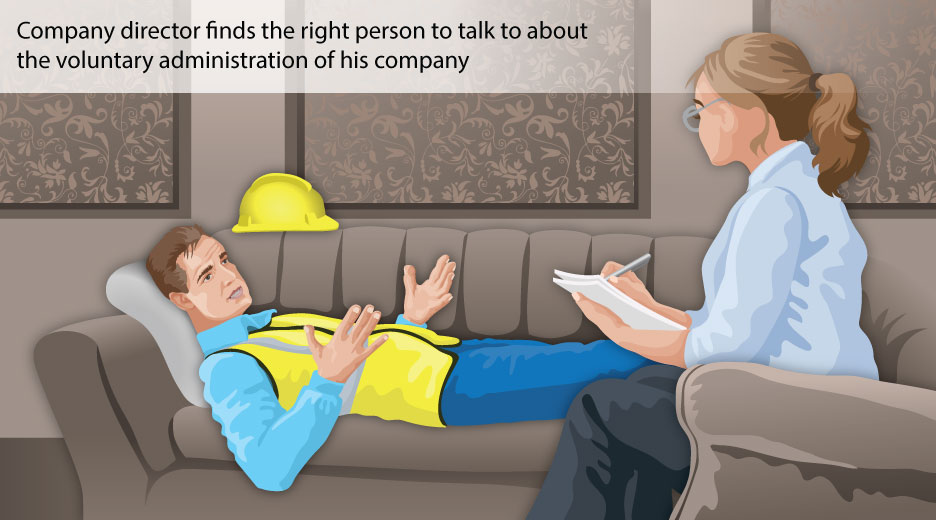What are the good parts of the Australian voluntary administration process?
It is fair to say that, generally speaking, voluntary administration is not a successful mechanism for restructuring insolvent companies in Australia. Less than one percent end up in a successful compromise with creditors, a Deed of Company Arrangement (‘DOCA’), and continue trading.

Contents:
Nevertheless, voluntary administration does have some benefits, both to specific companies and society as a whole. In this piece, we consider some of the good parts of voluntary administration and some of the benefits of this mechanism compared to alternative responses to company distress.
Moratorium on unsecured creditor claims
At the point where voluntary administration is being considered, creditors are usually already knocking on the door. When directors resolve that the company is, or is likely to be insolvent, and therefore appoint a voluntary administrator (a registered insolvency practitioner), enforcement action from unsecured creditors will be legally prohibited. Unsecured creditors need to go through the voluntary administration process to seek to recover an amount because of the statutory stay in place during administration.
This moratorium gives distressed companies some essential ‘breathing space’ before they can be wound up by creditors to explore whether a business turnaround is viable.
By contrast, there is no moratorium in the case of receivership. Receivership involves a qualified third party (‘the receiver’) being appointed to a company in order to recover a secured debt. As the receiver has no general obligation to unsecured creditors, those unsecured creditors have an added incentive to enforce their debts against the company (as they will be scared that they may end up with nothing). This can lead the company even more quickly down the path to winding up.
For this reason, where the company is insolvent, it is quite common for a voluntary administrator to be appointed at the same time as a receiver.
The new restructuring process for small businesses (those with debts less than $1 million), small business debt restructuring, has incorporated this element of voluntary administration into the new process. In this process, a small business restructuring practitioner helps the directors (who remain in control of the business) to come up with a restructuring plan, which creditors vote on. While a restructuring plan is being developed, an unsecured creditor cannot pursue their claim against the debtor company.
It aids director control
Unlike receivership or winding up, it is the directors who appoint the insolvency practitioner in the case of voluntary administration. In theory, directors may see this as an opportunity to appoint a sympathetic voluntary administrator. However, it is worth noting that no matter how they are appointed, the voluntary administrator operates independently and in the interests of the insolvent company and the creditors, rather than directors.
The creditors also have the ability to replace the voluntary administrator with one of their own choosing at the ‘first meeting of creditors’. Furthermore, if a DOCA is subsequently executed, or the company goes into liquidation, creditors can appoint another individual as the deed administrator or liquidator respectively. This can be a form of ‘protest’ against the current voluntary administrator.
Nevertheless, the ability to appoint a voluntary administrator can help, because:
- It can be a useful tactic to get breathing space. Directors can delay an ‘incoming’ winding up, allowing them to get their affairs in order
- It can be combined with a ‘pre-pack’. The appointment of a voluntary administrator can coincide with the preparation of a ‘pre-packaged insolvency arrangement’ (‘pre-pack’). In this process, the assets of the distressed company are sold to a new company for fair market value. The directors and members/ shareholders of the new company can be the same as the directors and members/ shareholders of the old company. The voluntary administrator can effectively ‘sign off’ on the pre-pack where they are convinced that it represents the best deal for the company’s creditors as a whole. The voluntary administrator can then offer a DOCA to those creditors using sale proceeds. Relatedly, voluntary administrators can set up a ‘creditor’s trust structure’, where the assets and obligations to creditors are transferred to a trust, eliminating creditor claims against the distressed company.
- No recovery of ‘voidable transactions’. In an insolvent liquidation/ winding up, liquidators can pursue directors for a range of transactions and seek to recover assets of the company. This can include unreasonable director-related transactions, giving unfair preference to certain creditors or engaging in uncommercial transactions. Voluntary administrators do not have this power, so a voluntary administration can delay any such action.

Additional reading:
The Complete Guide to Trading Trusts for small and medium-sized business
DOCAs are straightforward and flexible instruments
Ultimately, a DOCA usually ends up presenting a return to creditors that would provide them with more than they would receive through a winding up of the company. It is a flexible instrument that can be structured in a way that would be more appealing to the creditors than a liquidation scenario. It is getting to an agreement with reasonable returns that is the hard part.
This is closely connected to the fact that voluntary administration is not court supervised, as the main restructuring process in the US, Chapter 11, is. This makes the process cheaper and puts more power in the hands of creditors.
Speed
A voluntary administration can be over in 30 days (though this can also be extended). The speed of the process means that it may be possible to restructure the company before things get even worse, and can therefore be a useful ‘Hail Mary’. It means that the company may be able to continue trading after only experiencing a relatively short period of reputational ‘sting’ for going through an external administration process.
Conclusion
Voluntary administration does not have a great reputation in Australia. The public tend to see it as “glorified liquidation”, with little benefit to creditors or society as a whole. The main beneficiaries of the process are often just the insolvency industry insiders. However, there are some features of voluntary administration that can be beneficial to those involved:
- It puts a temporary stop (‘moratorium’) on creditor actions to pursue their debt/ have the company wound up.
- Through the power of appointment, it gives directors a degree of influence over the voluntary administration.
- The compromise in a voluntary administration, a DOCA, is a flexible instrument.
- The process is quick.